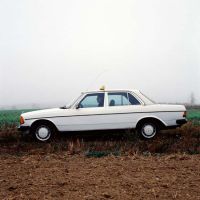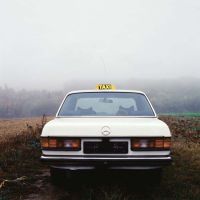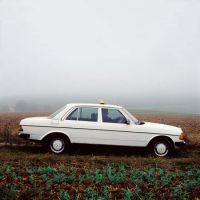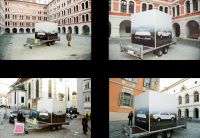Photocube (2003)
In times of transition, art tends to invent new spatial perspectives. Such is the case today. As in the case of the transition to modernity, an attempt is made to „migrate“ as it were from our three-dimensional everyday perception and to outwit it in our aspiration for a Utopian outside space.
The cube is the most common model depicting the central perspective. In the case of Ben G. Fodor’s photocube, we perceive this space as real, as physical, as genuine because we have to walk around it in order to see all four images.
As a rule, cameras also reproduce the world according to the principles of central perspective.
Because of the huge amount of media images, we become embedded day-in, day-out in this traditional perspective. In practice, it doesn’t really help much even if we make ourselves conscious of the fact that we are dealing with virtual images. The photocube emphasizes this visual enclosure. The driver (played by the artist) can’t really get out – the doors and locks are missing... Nevertheless, he has disappeared from the mysterious shuttle by the fourth picture. The paradox of being inside and outside at the same time is realized to a certain extent by the increasing number of migrants (of which the artist is one):
They live inside and outside society at the same time. This condition which has the potential to expand a person’s horizon makes it easier for them, just as for the “residents”, to overcome the restrictions of (mental) vision and “to touch the future on its hither side“. (Homi Bhabha)







